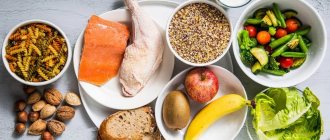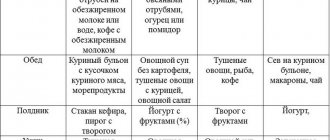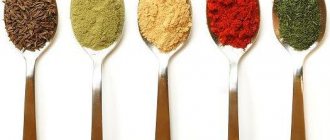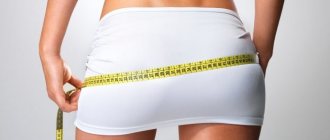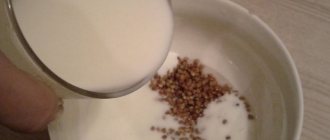Flexible Diet Principles
Lyle MacDonald described the features of his approach to proper nutrition for the purpose of losing weight in a book called “Flexible Diet.” In it, the author explains in detail how it fundamentally differs from all traditional diets, and also considers all the advantages of the proposed nutritional system.
- One flexible diet cycle lasts a week: no more and no less. There may be more than one cycle, but there is no point in sticking to such a diet, for example, for a week and a half, interrupting one of the cycles.
- You will have to eat differently on different days, changing your caloric intake and the ratio of proteins, fats and carbohydrates, thus “swinging” your metabolism.
- The diet itself must certainly be combined with training.
- There can be as many meals as is convenient for the person losing weight.
Diet plan
In general, the MacDonald diet seems complicated only at first glance, in fact, one quickly gets used to its rules, it does not get boring like other diets, since by and large you can eat almost everything, but only without mixing proteins and carbohydrates.
Moreover, there are no strict requirements to eat carbohydrates only in the first half of the day. A flexible diet is somewhat reminiscent of regular eating, when you can overeat one day and undereat on another; On one day you eat mostly porridge, on another - a lot of meat or fish.
- For the first three days, you need to eat protein foods, and you need to halve the number of calories relative to the norm.
- On the fourth day, meals should be different before and after lunch: in the first half of the day - protein nutrition, in the second - carbohydrate nutrition.
- On the fifth, sixth and seventh days, carbohydrates should first predominate, and complex ones at that, and very little protein and fat should be consumed. Then the ratio of BJU changes slightly with a slight increase in the protein component by the end of the seven-day period.
- On the fifth day, the number of calories is twice the norm! On the sixth and seventh – slightly less than normal. But the sixth day should be with good physical activity, and the seventh with passive rest.
Then the cycle can be repeated, not forgetting about sports.
Fat Burning
As already mentioned, to lose subcutaneous fat you must eat fewer calories than you burn. Remember that a deficit of 3,500 calories (approximately) results in the loss of one pound of fat. Typically, the recommendation is to reduce calories by 500 calories/day, which should result in a loss of one pound of fat per week. However, in practice everything is more complicated. This also explains why it's unrealistic to aim to lose more than 1-1.5 pounds of fat per week. Losing 2 pounds of fat per week (which is often recommended in popular magazines and diet books) would require creating a 7,000 calorie deficit. Think for yourself, for this you will need to either reduce your caloric intake by 1000 calories per day (which is too steep a diet cut that not all people can tolerate), or increase your activity by 1000 calories per day (which is also unrealistic - this is comparable to walking/running 10 miles per day for a person weighing 150 pounds). It is simply impossible to hope to lose fat even faster. And, excluding severely obese people, I have seen almost no people lose 2 pounds of fat per week.
In addition, the body does not tolerate well when you suddenly change your eating or physical activity habits. I have learned from my own experience that cutting the calorie intake by 1000 kcal per day is the maximum that the body can withstand. Some people may find that not eating even 500 calories a day has a negative impact on their well-being. Typically, in such cases, metabolism simply slows down and fat loss stops. Now you understand why “starvation diets” consisting of 800-1000 calories per day or even less do not work. The average sized man needs about 2,700 calories per day, the average woman needs about 2,000 calories. Consumption of 1000 kcal less than the basal level usually leads to a catastrophic deterioration in well-being. Your metabolism will slow down, your body will begin to “eat” muscle, and fat loss will stop. If you also start playing sports at the same time... in general, I sympathize with you. Thus, a 1000 calorie deficit can be created by EITHER decreasing caloric intake OR increasing activity. You should NOT reduce your calories by 1000 calories per day AND AT THE SAME TIME increase your daily activity by 1000 calories per day.
I've seen people try to cut 1000 calories a day AND AT THE SAME TIME supplement their training with a lot of aerobics. As a rule, bodybuilders do this all the time during pre-contest preparation, especially those who came to the beginning of the diet too fat, too late. The bodybuilder I was preparing for her first competition had shrunk to 7-8% subcutaneous fat. She never went below 1400 calories per day (at 120 pounds, she consumed 12 calories/lb) and did about 75 minutes of aerobic exercise (usually 45 minutes in the morning, and 30 minutes in the evening) several times a week (I wanted to try to do even less, but she was a little late to the diet. Other athletes in her gym were consuming 900 calories a day and spending 3 hours a day on a stationary bike, but could not burn fat (one even passed out in the locker room ) There is another secret - my ward used a modified Anabolic diet, while others were going crazy on their low-fat diets, but more on that in another article
